 Like a lot of jobs working in software development can be depressing as you are continually dealing with things that have gone wrong and rarely dwell on the majority of things that are being quietly successful. I was therefore pleasantly surprised when a colleague pointed out that they were finding my mobile app useful. What mobile app?
Like a lot of jobs working in software development can be depressing as you are continually dealing with things that have gone wrong and rarely dwell on the majority of things that are being quietly successful. I was therefore pleasantly surprised when a colleague pointed out that they were finding my mobile app useful. What mobile app?
Getting on for two years ago I developed an experimental mobile application that allows a user to look up a plant by its accession number and find out more about its history than is displayed on the label. It looks like a “phone app” but is actually a mobile friendly web site. It would be impractical to download one hundred thousand or more plant records onto a phone and then keep them is sync with our main databases. This kind of job has to be done via a network connection either over WiFi or the 3G network. So there is no point in developing a installable app. This is fine for our Edinburgh garden but our regional gardens can struggle to get a mobile signal let alone 3G. Here is how the app works:
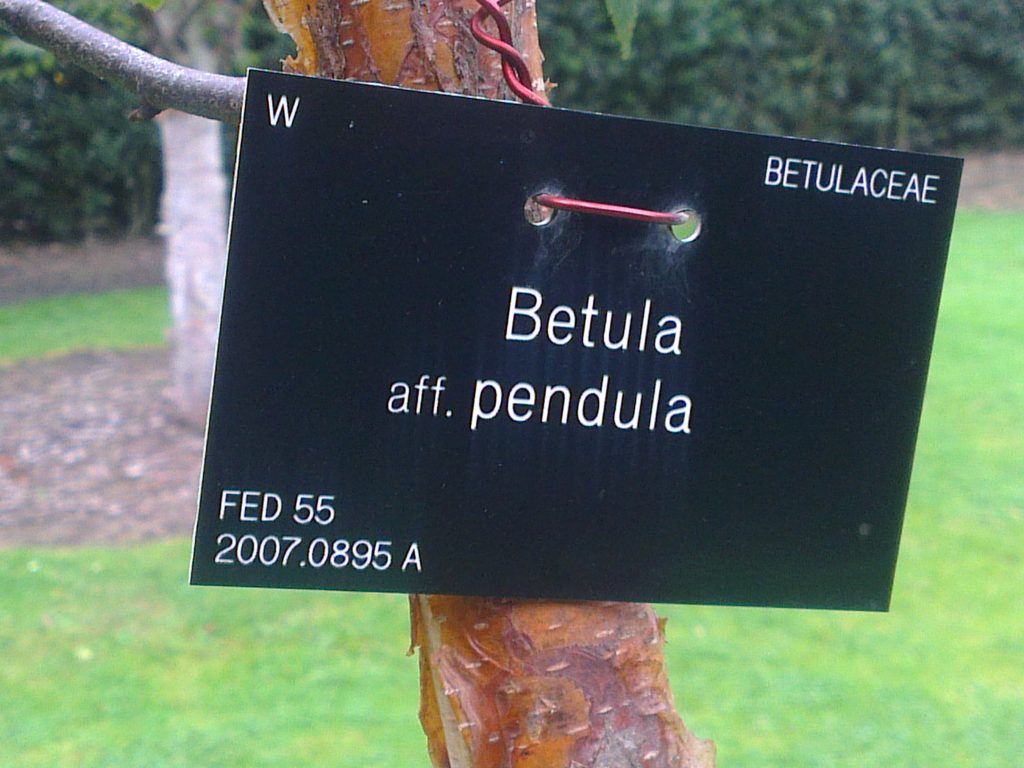
All our specimen labels have an eight digit accession number on the bottom left corner. Each plant within an accession is signified by a letter after the accession. Entering the accession number in the app displays details about its origin and other plants within the accession.
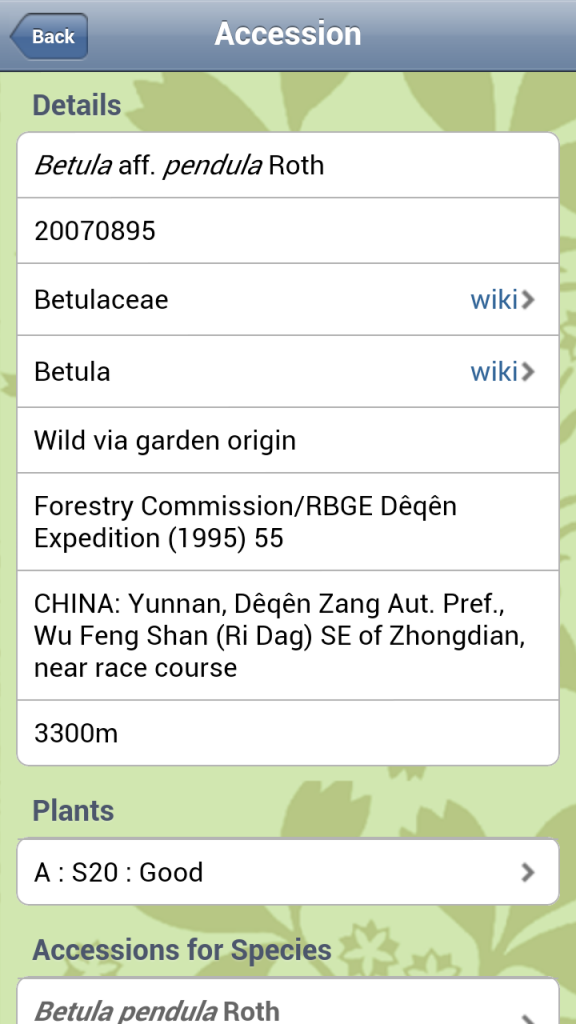
In this case there is only one plant in the accession but other accessions within this species are listed. Clicking the link displays the history of the plant within our collections.
Today the app is useful for garden supervisors who need to make decisions about resource allocation. If a sick plant is one of multiple plants from the same accession (which may be genetically identical) then it may not be worth too much effort to keep it alive. If, on the other hand, it is the last example of that species we have then it may be very much worth the effort. This use was not envisaged when I built the app.
Try It For Yourself
If you are in the garden you can try out the app for yourself. With the browser on your phone simply visit this URL: http://rbg-web2.rbge.org.uk/mobile (N.B. It will not run on all desktop browsers as it is only designed to run on mobile devices.) If you have a QR-Code reader you could ‘dink’ the code on the right to load the app.
Baby Sister App
The botanics isn’t just about living plants. We have three million herbarium specimens and a system for databasing these using bar codes.
There is another application, even simpler than the one for living plants, that will display the data associated with a bar code and a thumbnail picture if the specimen has been scanned.
This is being used in the herbarium to help with laying away (putting specimens in the correct storage locations). The staff use it in conjunction with a blue tooth bar code reader so they don’t have to type in the bar code numbers. If you would like to try it out you can load it onto your phone using this URL: http://rbg-web2.rbge.org.uk/mobile/herbarium/ Or with the QR Code displayed. If you don’t have access to the herbarium you could pick some bar codes from our herbarium catalogue – which actually displays much more data but isn’t mobile friendly.
Future Developments
Both of these applications are attempts to explore a new technology. This kind of “playing” is the way we learn. Unless we put something out there so people can react to it we will never know if it has potential or not. The trick is in doing this quickly and dropping or adapting ideas that don’t prove fruitful. When the apps were first written fewer people had smart phones so they were of limited use. The fact that they are now being used more widely indicates it might be time to revisit what we offer by way of mobile access to our institutional databases. That’s when the work really starts.
What do you think? Should we take this kind of data access further? If so what would you like to see? Of course you may be reading this on a mobile device already as Botanics Stories is also mobile friendly!

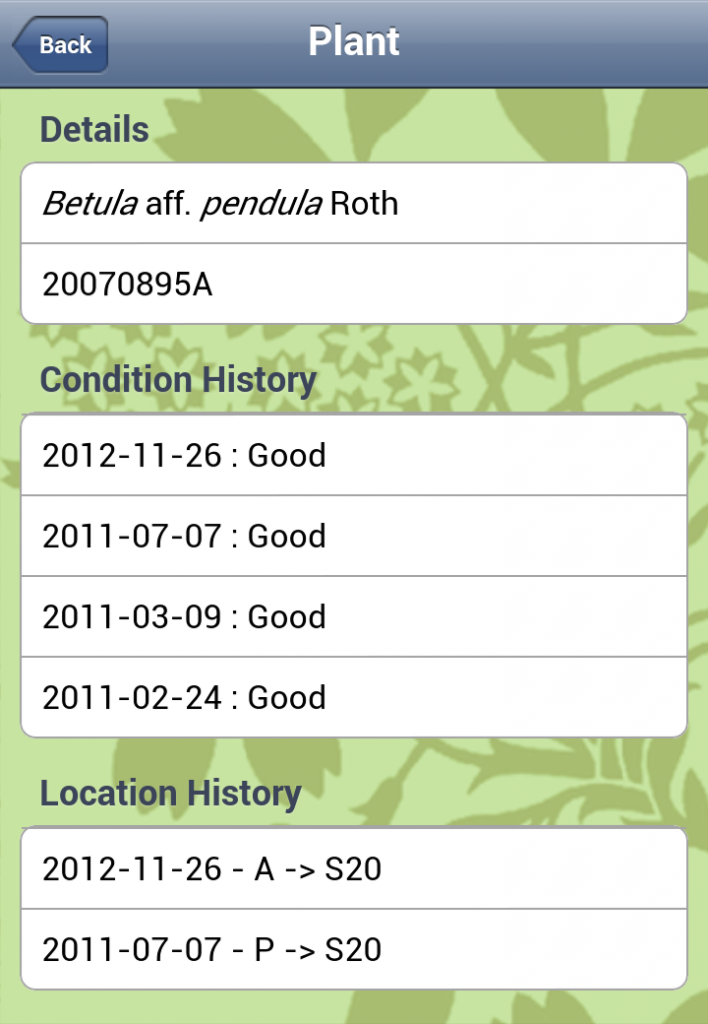
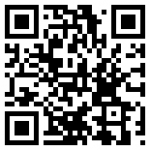
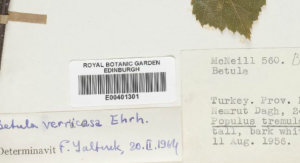
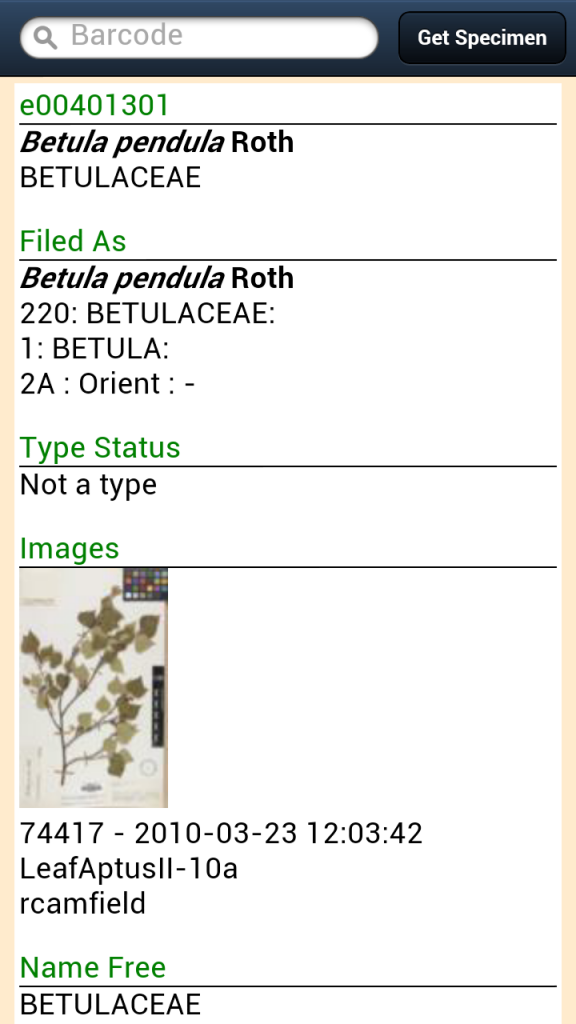
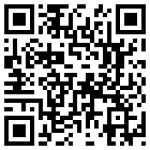
Rupert Wilson
Hi Roger, interesting story especially the unexpected use of something you developed some time ago. It’s good to see BG-BASE data being exploited in the outside world. We still use HTMLExport quite effectively on our Information kiosks. One point I would mention is I could only read the post on stories.rbge in the top 1/3 of my HTC Wildfire browser as the rest was taken up with the you may also like menu. Not so mobile friendly.
Roger Hyam
Hi Rupes,
Thanks for your comment. The secret force behind this is not only BG-BASE but Martin’s work developing both HTMLExport and the Open Insight to MySQL dump process that we use. These mobile apps are relatively trivial – just running SQL against the night MySQL dump of our data.
That’s a nice thing about this work. We are adding building layers on each others stuff.
Worried to hear that Stories doesn’t render well on you HTC Wildfire. Could you send me a screen shot (hold the power down and tap the home button). Back to sorting out problems again. I shouldn’t have tempted the gods.
Thanks.
Roger